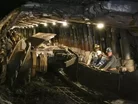MSHA Wants to Reduce Machine-Related Deaths Through Technology

The Mine Safety and Health Administration (MSHA) wants to save miners’ lives. The MSHA has announced a new rule to improve safety in US coal mines by making it mandatory to install continuous mining machines with proximity detection systems.
“It’s a system that sounds very ordinary, but it’s complicated to get it to function in the harsh environment of an underground coal mine,” said assistant US Secretary of Labor, Joe Main.
“We’re talking about miners getting crushed as one of the comparable causes of mining deaths and with proximity detection, we can make that disappear.”

Since 1984, there have been 35 deaths to coal miners after being pinned, crushed or struck by continuous mining machines.
The new proximity detection technology utilizes electronic sensors to detect motion or the location of one object relative to another. The technology is programmed to send warning signals and stop machines before making contact with miners.
“Simply put, the proximity detection final rule will save lives and has the potential to dramatically improve the safety of mining operations,” said Joseph A. Main, assistant secretary of labor for mine safety and health. “It already has the support of many in the mining industry. In fact, a number of coal companies installed proximity detection systems long before there was a legal obligation to do so.”
To meet standards, proximity systems must:
• Move or reposition continuous mining machines to stop before contacting a miner;
• Provide audible and visual warnings on the miner-wearable component and a visual warning on the machine before it stops;
• Provide a visual signal on the machine that shows the machine-mounted components are functioning properly;
• Prevent movement of the machine if any machine-mounted component is not functioning properly (except limited movement for repairs);
• Prevent electrical interference that adversely affects the performance of other electrical systems in the mine;
• Be installed and maintained in proper operating condition by a trained person.
The rule will initially apply only to continuously active machinery but MSHA indicated it was planning to extend the legislation to all machines that are not of fixed positions in underground coal mining operations. The new rule will be published in the Federal Register on Jan. 15 and become effective 60 days thereafter.
“Over the next few years we should have it fully implemented, so down the road, we should be able to eliminate these crushing deaths and injuries,” added Main.



